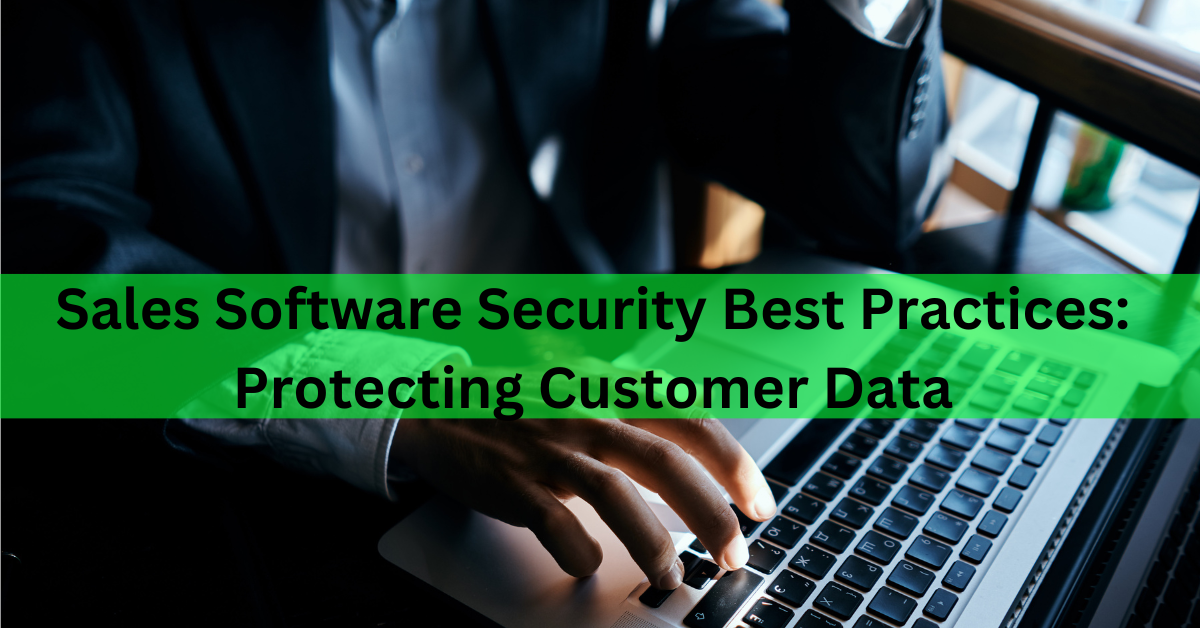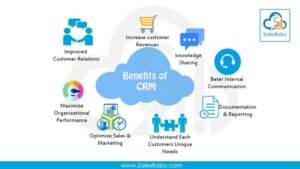In today’s digital age, businesses rely heavily on sales software to manage their customer data, streamline sales processes, and drive revenue growth. However, as with any technology, without having proper sales software security can put sensitive customer data at risk. Data breaches can lead to financial losses, reputational damage, and even legal consequences. Therefore, it is crucial for businesses to implement robust security measures to protect their customer data and ensure compliance with data privacy regulations.
Key Security Vulnerabilities in Sales Software
Sales software applications often store a wealth of sensitive customer data, including personal information, financial details, and purchase history. This data makes sales software a prime target for cybercriminals who seek to exploit vulnerabilities and gain unauthorized access to valuable information. Common security vulnerabilities in sales software include:
1. Weak Passwords and Authentication:
- Easy-to-guess passwords: Many users still use passwords that are easy to guess, such as their name, birthday, or common words like “password123”. These passwords are easily cracked by attackers using brute-force or dictionary attacks.
- Lack of multi-factor authentication (MFA): MFA adds an extra layer of security by requiring users to provide additional verification factors, such as a code from their phone or a fingerprint scan, in addition to their password. Without MFA, attackers only need to steal a password to gain access to an account.
2. Insecure Data Storage:
- Plain text storage: Some sales software applications store sensitive customer data in plain text, meaning that anyone with access to the data can read it without any decryption.
- Weak encryption: Even if data is encrypted, weak encryption algorithms can be easily broken by attackers, exposing the data to unauthorized access.
- Lack of data access controls: Some sales software applications lack proper access controls, allowing unauthorized users to access sensitive customer data.
3. Vulnerable Software:
- Outdated software: Outdated sales software applications may contain known vulnerabilities that attackers can exploit to gain unauthorized access or execute malicious code.
- Unpatched software: Even if software is not outdated, it may contain unpatched vulnerabilities that attackers can exploit.
- Third-party integrations: Sales software may integrate with third-party applications that have their own security vulnerabilities.
4. Phishing and Social Engineering Attacks:
- Phishing emails: Attackers may send phishing emails that appear to be from legitimate sources, such as the sales software company or a trusted partner. These emails may contain links that, when clicked, take users to fake websites that look like the real websites. Once users enter their login credentials on these fake websites, the attackers can steal them.
- Social engineering: Attackers may use social engineering techniques to trick users into revealing sensitive information or clicking on malicious links. For example, an attacker may call a user and pretend to be from the sales software company’s tech support team, and then ask for the user’s password to “fix” a problem.
These are just a few of the key security vulnerabilities in sales software. Businesses should be aware of these vulnerabilities and take steps to mitigate them to protect their customer data.
Sales Software Security Best Practices
To safeguard customer data and minimize the risk of security breaches, businesses should implement the following best practices:
- Establish Strong Password Policies: Enforce strong password requirements, such as minimum length, complexity, and regular password changes. Implement MFA for all user accounts.
- Encrypt Sensitive Data: Encrypt sensitive customer data, both at rest and in transit, using industry-standard encryption algorithms to prevent unauthorized access.
- Implement Role-Based Access Control (RBAC): Restrict access to customer data based on user roles and responsibilities. Grant access only to the data necessary for each user’s job function.
- Regularly Patch and Update Software: Keep sales software applications up to date with the latest security patches and updates to address known vulnerabilities.
- Conduct Regular Security Audits: Perform regular security audits of sales software systems to identify and address potential vulnerabilities before they can be exploited.
- Educate Employees on Cybersecurity: Train employees on cybersecurity best practices, including password management, phishing awareness, and social engineering tactics.
- Implement a Data Loss Prevention (DLP) Solution: Deploy a DLP solution to monitor and prevent unauthorized data exfiltration from sales software applications.
- Comply with Data Privacy Regulations: Understand and comply with applicable data privacy regulations, such as GDPR and CCPA, to protect customer data rights.
- Have a Data Breach Response Plan: Prepare a data breach response plan to effectively address and manage data breaches in case they occur.
- Utilize a Secure Cloud Environment: If using cloud-based sales software, ensure the cloud provider adheres to industry-standard security practices and data privacy regulations.
Protecting Customer Data in Sales Automation and Prospecting Tools
Sales automation and prospecting tools play a crucial role in modern sales processes, but they also handle sensitive customer data. To protect customer data in these tools, businesses should follow these additional best practices:
1. Vet Third-Party Integrations
Sales automation and prospecting tools often integrate with third-party applications, such as CRM systems and marketing automation platforms. Before integrating with any third-party application, thoroughly vet the vendor to ensure they adhere to industry-standard security practices and data privacy regulations. Assess their data security policies, encryption protocols, and access control mechanisms.
2. Monitor Data Sharing
When sharing customer data with third-party partners or integrations, maintain strict control over the data flow. Establish clear data sharing agreements that outline the purpose of data sharing, the data shared, and the responsibilities of each party involved. Implement data masking techniques to protect sensitive customer information that is not essential for the intended use.
3. Securely Store Contact Lists
Contact lists are valuable assets for sales teams, but they also contain sensitive customer data. Store contact lists and other customer data securely, using strong encryption algorithms and access controls. Implement role-based access restrictions to limit access to contact lists based on user roles and responsibilities.
4. Clean Up Deleted Data
Regularly review and delete outdated or unnecessary customer data from sales automation and prospecting tools. This reduces the amount of data exposed to potential security breaches and complies with data retention policies. Implement automated data deletion processes to ensure outdated data is purged regularly.
5. Educate Employees on Data Security
Employees are often the first line of defense against data breaches. Provide regular training on data security best practices, including password management, phishing awareness, and social engineering tactics. Emphasize the importance of data privacy and the consequences of mishandling customer information.
6. Implement Data Loss Prevention (DLP) Solutions
DLP solutions can help prevent unauthorized data exfiltration from sales automation and prospecting tools. Deploy a DLP solution to monitor and track data movement, identify suspicious activities, and block unauthorized data transfers. DLP solutions can also help enforce data usage policies and prevent sensitive data from being shared outside of authorized channels.
7. Comply with Data Privacy Regulations
Understand and comply with applicable data privacy regulations, such as the General Data Protection Regulation (GDPR) and the California Consumer Privacy Act (CCPA). These regulations govern how personal data is collected, used, and shared. Implement data governance processes to ensure customer data is handled in accordance with these regulations.
8. Prepare for Data Breach Response
Despite implementing robust security measures, data breaches can still occur. Develop a comprehensive data breach response plan that outlines the steps to be taken in case of a data breach. This plan should include procedures for identifying the breach, notifying affected parties, containing the breach, and remediating any damage caused.
By implementing these measures, businesses can protect customer data, maintain their reputation, and comply with data privacy regulations while leveraging sales automation and prospecting tools to drive sales growth.




